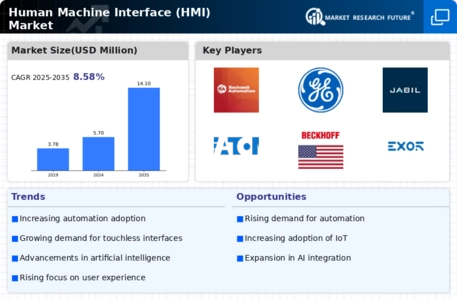Market Analysis
In-depth Analysis of Human Machine Interface Market Industry Landscape
The Human Machine Interface (HMI) market is at the point where technological developments are rapid while automation is gradually being integrated into various industries. HMI is the intermediary that bridges humans and machines, providing communication channels in different applications. A number of factors affect the market dynamics for HMI, and influence its development. A major factor behind the constant changes in HMI market is technology. Now that Industry 4.0 and the era of IoT are upon us, more end users want intuitive cutting-edge interfaces to raise user experience while improving operational performance (OpEx). The trend is toward touchscreens, gesture recognition and voice control to create a more natural mode for people interacting with machines. Besides enhancing end user satisfaction, this process of technological evolution also helps industries implementing HMI solutions increase their overall productivity. In addition, the growing trend of automation in manufacturing processes and industrial operations is an important influence on HMI market developments. Industries are looking for ways to simplify the process, minimize human involvement and increase precision. As a result, there is an increasing need for HMI systems that can smoothly integrate into automated processes while providing real-time data visualization and control. This trend is particularly apparent in industries such as automotive, pharmaceuticals and energy where well-performing human-machine interfaces are vital. The global trend toward sustainability and energy efficiency is having an impact on the HMI market. More and more industries are concentrating on reducing energy consumption, minimizing waste of all kinds, and improving environmental performance generally. The HMI systems are an important part of environmental conservation, helping monitor and regulate energy use in many applications. Consequently there is increasing demand for HMI solutions which not only deliver high-end functionality, but also help environmental goals. Moreover, the market dynamics of HMIs are affected by various industries adopting these technologies. Though manufacturing has always been a traditional bastion for HMI applications, other areas such as healthcare and transportation are increasingly becoming hot spots of growth. Different industries have different needs and requirements, making the HMI providers to respond by offering customized solutions. The diversification of its application areas makes the market more complex, however; every industry has different requirements and demands when it comes to HMIs producers.
















Leave a Comment